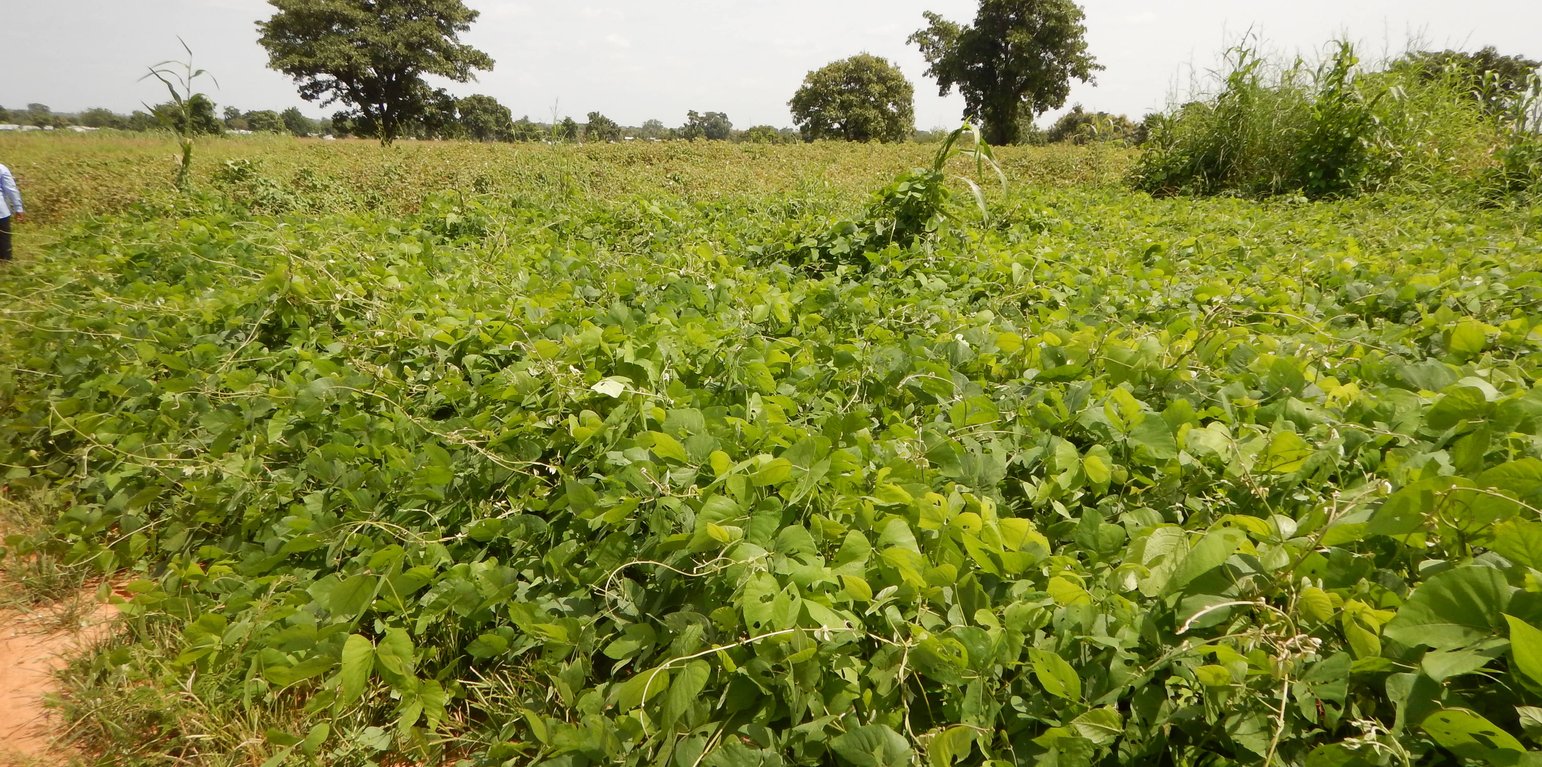



La technologie du Mucuna en pure est appliquée par les producteurs sur des sols pauvres,enherbés (présence d’Imperata, de Striga…) ou sur des sols moyennement riches. Ils'accommode de sols sableux, argileux et même des sols très acidifi és. Il est sensible aux solshydromorphes mais la variété Cochinchinensis (de couleur blanche) supporte les solstemporairement inondables.
Dans sa mise en place en culture pure, les producteurs sèment deux graines par poquet à unécartement de 0,80m entre lignes et 0,40m entre plants sur la ligne, ce qui nécessite 30 kg/hade semence. Pour la première campagne lors du démarrage des appuis du projet, lessemences ont été mise à la disposition des producteurs. A partir de la deuxième année, lesproducteurs se sont procurés en semences auprès de producteurs pairs. Le semis a lieu audébut de la saison de pluies et la durée de leur cycle varie de 100 à 300 jours.
Pour l’entretien, après une bonne levée et suivant l’appréciation du degré d’enherbement, lesproducteurs sarclent une ou deux fois au plus les champs de mucuna. Cet entretien donnel’avantage à la légumineuse améliorante de bien s’établir pour couvrir et dominer lesmauvaises herbes. Pour améliorer leur productivité, les producteurs laissent des piedsd’arbres dans les champs. Ces derniers servent de tuteurs et contribuent à augmenter lenombre d'infl orescences par plante, le nombre de fl eurs par infl orescence, le nombre degraines par gousses et le taux de germination des graines récoltées. Le mucuna meurtnaturellement après avoir produit des graines.
Les producteurs accompagnés constatent une amélioration des rendements des culturesinstallées après le mucuna. Ainsi par exemple pour le maïs, le rendement oscille autour de2,5 à 3 tonnes à l’hectare s’il est installé sur un terrain ayant précédemment accueilli lemucuna contre 1,5 tonne pour un sol ordinaire. C’est pourquoi les producteurs l’appellent « laPlante Miracle ». A l’hectare, les producteurs ont un rendement moyen de 800kg de graines demucuna. Ce rendement pourrait atteindre la tonne si les conditions climatiques y sontfavorables et les entretiens sont faits à temps. De façon synthétique, le mucuna a des eff etspositifs sur diverses composantes du sol qui se présentent comme ci-après.
Entre autres avantages remarqués par les producteurs, il y a la très bonne conservation del’humidité du sol, la protection du sol contre les rayons solaires, l’amélioration de la viemicrobienne mais aussi une ource de matière organique. Aussi, constatent-ils une bonneaération du sol, bien meuble et poreux. Les feuilles constituent un bon fourrage pour lesanimaux notamment les moutons en stabulation qui sont vendus à l'occasion de la fête deTabaski.
La plupart des producteurs préfèrent plus la capacité de mucuna à détruire les adventices(striga, impérata indica) et sa capacité à restaurer le sol en ses éléments nutritifs. Toutefois,le mucuna présente certains inconvénients dès qu’il est installé. Il constitue un lieu de refugepour les reptiles en occurrence les serpents.
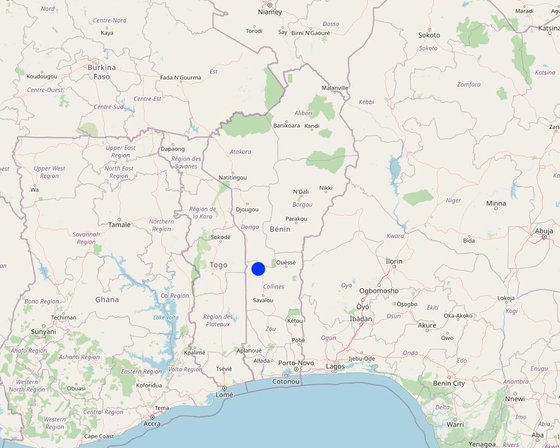
Location: Bantè, Donga, Benin
No. of Technology sites analysed: single site
Spread of the Technology: evenly spread over an area (1.0 km²)
In a permanently protected area?: Nee
Date of implementation: 2016
Type of introduction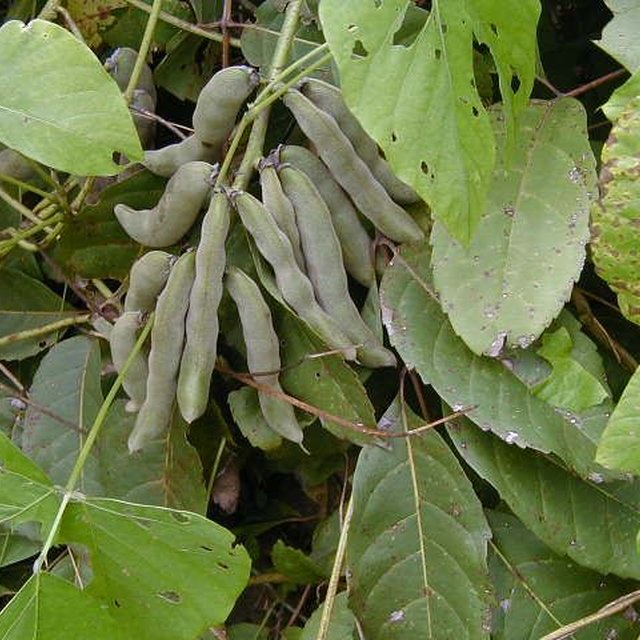
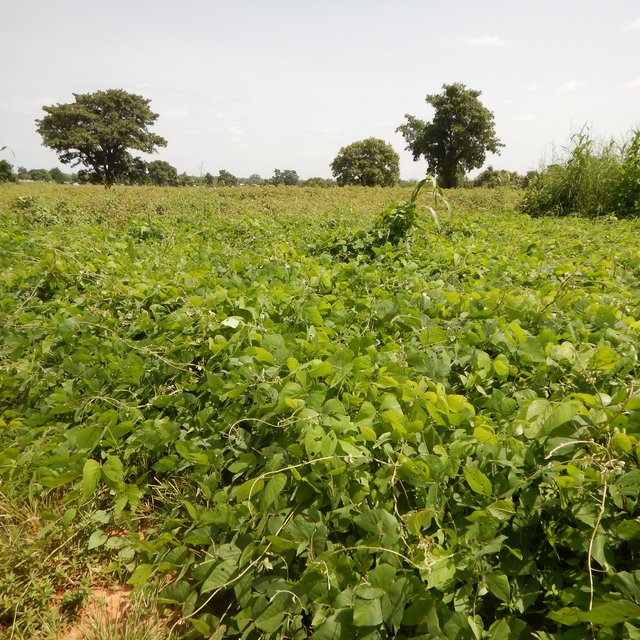







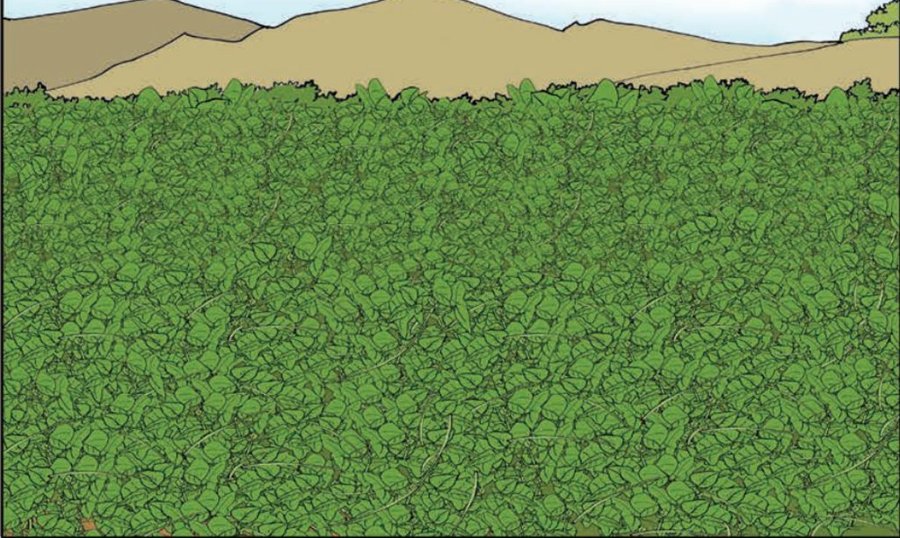
| Specify input | Unit | Quantity | Costs per Unit (CFA F) | Total costs per input (CFA F) | % of costs borne by land users |
| Labour | |||||
| Clearing | ha | 1.0 | 17500.0 | 17500.0 | 100.0 |
| Plowing | ha | 1.0 | 25000.0 | 25000.0 | 100.0 |
| Seeding | ha | 1.0 | 10000.0 | 10000.0 | 100.0 |
| ha | 1.0 | 20000.0 | 20000.0 | 100.0 | |
| Equipment | |||||
| 100.0 | |||||
| 100.0 | |||||
| Daba | Unit | 1.0 | 4000.0 | 4000.0 | 100.0 |
| Houe | Unit | 1.0 | 3000.0 | 3000.0 | 100.0 |
| Plant material | |||||
| Seeds | Kilogram | 30.0 | 500.0 | 15000.0 | |
| Total costs for establishment of the Technology | 94'500.0 | ||||
| Total costs for establishment of the Technology in USD | 153.66 | ||||
| Specify input | Unit | Quantity | Costs per Unit (CFA F) | Total costs per input (CFA F) | % of costs borne by land users |
| Labour | |||||
| Weeding | ha | 1.0 | 20000.0 | 20000.0 | 100.0 |
| Harvest | ha | 1.0 | 12500.0 | 12500.0 | 100.0 |
| Threshing | ha | 1.0 | 12500.0 | 12500.0 | 100.0 |
| Firewalling | ha | 1.0 | 12500.0 | 12500.0 | 100.0 |
| Total costs for maintenance of the Technology | 57'500.0 | ||||
| Total costs for maintenance of the Technology in USD | 93.5 | ||||
Quantity before SLM: 500 kg/ha
Quantity after SLM: 3t/ha
500 kg/ha of maize (for a plot without Mucuna), 3 t/ha of maize (for a plot with Mucuna)
The products are naturally enhanced and not reliant on chemical fertilizers.
The leaves provide valuable fodder for animals, especially stalled sheep, which are sold at Tabaski (Eid al-Adha).
Implementing this system has enabled the expansion of maize production on land that was previously deemed highly infertile.
Improved yields and no recourse to mineral fertilizers
Enhanced yields translate to increased earnings for producers, allowing them the means to afford better care
The mulch supplied by Mucuna contributes to effective soil moisture conservation.
Mucuna serves as a protective shield for the soil, shielding it from the direct rays of the sun.
Improves soil fertility
Contributes enormously to improving soil fertility, hence its nickname of "Miracle Plant".
Mucuna restricts and impedes the growth of weeds.